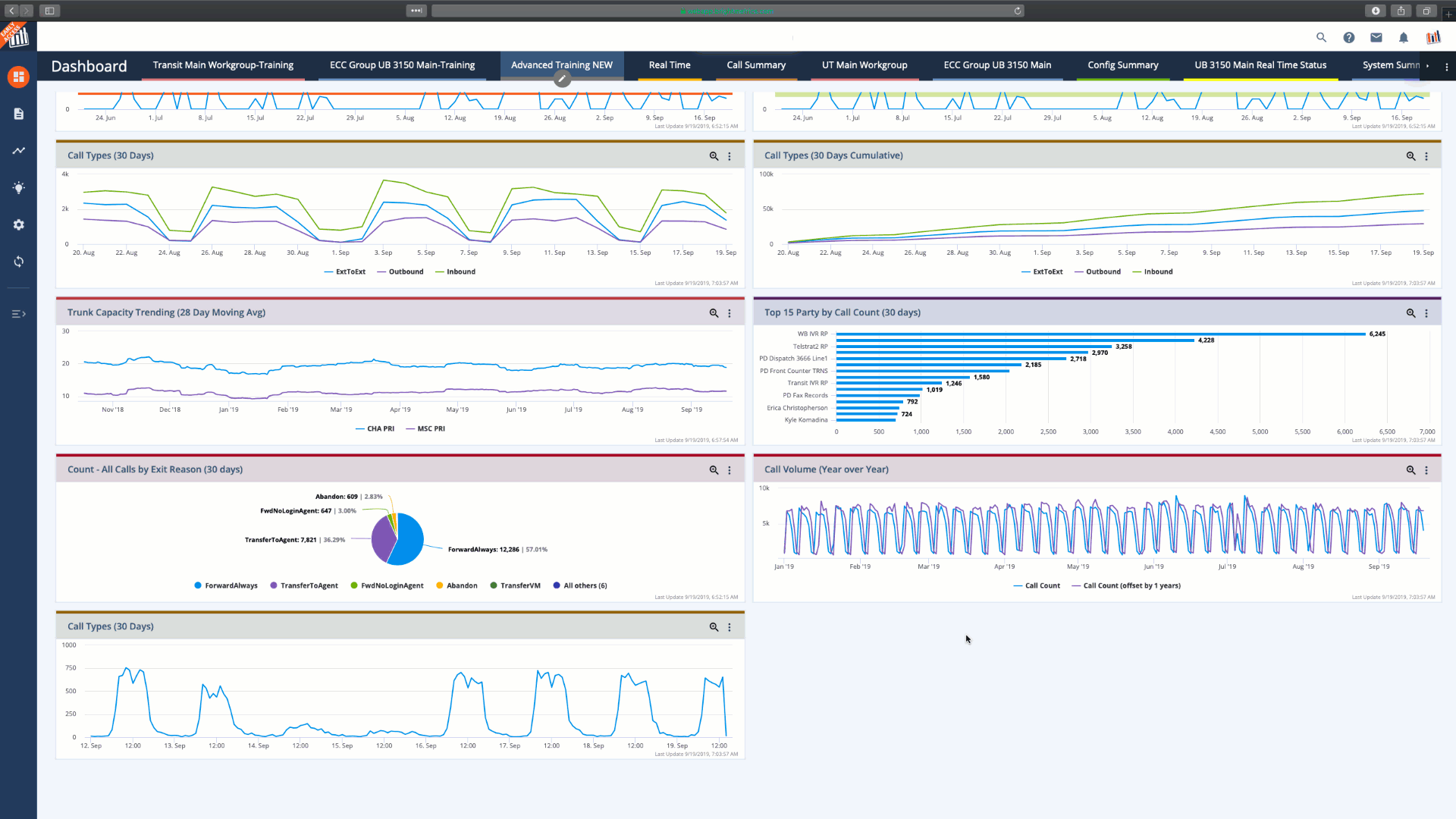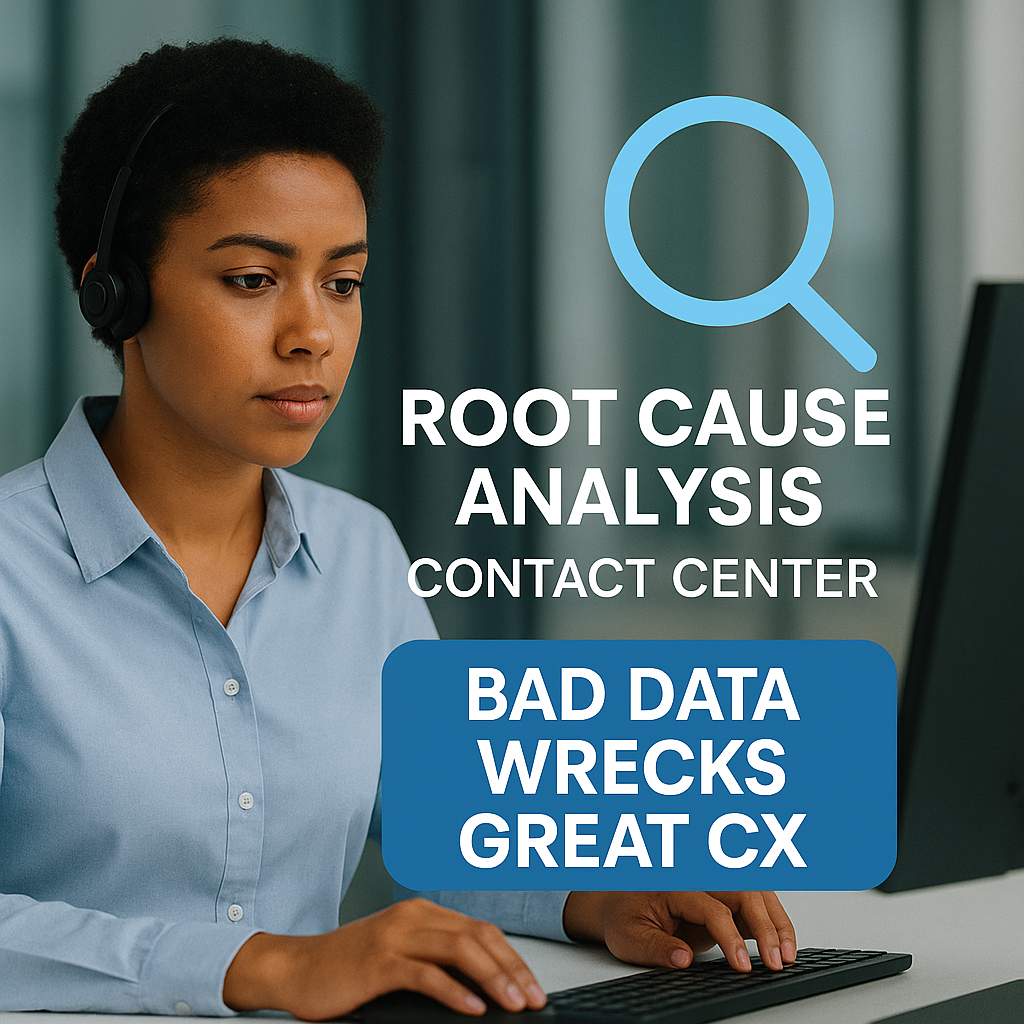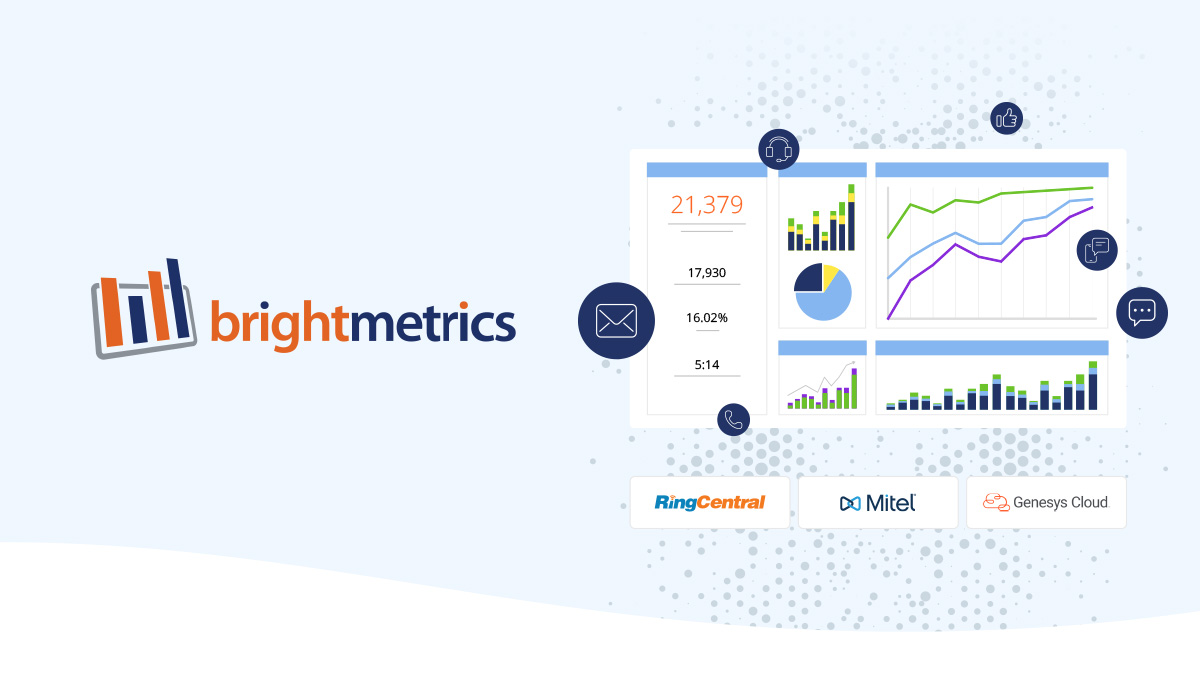Executive Summary
Contact centers relying solely on Average Handle Time (AHT) miss critical efficiency opportunities. Modern contact center analytics reveal that true efficiency combines First Call Resolution (FCR), Customer Effort Score (CES), and multiple performance metrics to deliver superior customer experiences while reducing operational costs.
The Problem with Traditional Contact Center Metrics
Why Average Handle Time Falls Short
For decades, contact centers have prioritized Average Handle Time (AHT) as their primary efficiency metric. This approach creates several problems:
- Speed vs. Quality Trade-offs: Agents rush calls, leading to incomplete resolutions
- Increased Repeat Contacts: Quick calls often require follow-up interactions
- Agent Stress: Pressure to minimize talk time affects service quality
- Higher Customer Churn: Unsatisfied customers abandon services
The Reality: A customer who hangs up quickly but calls back twice represents operational failure, not efficiency.
Modern Contact Center Analytics: A Comprehensive Approach
- First Call Resolution (FCR)
What is FCR? The percentage of customer issues resolved during the initial contact without requiring follow-up interactions.
Why FCR Matters:
- Reduces customer effort and frustration
- Decreases overall contact volume
- Directly impacts customer loyalty and retention
- Provides measurable efficiency improvements
Analytics Implementation: Track FCR across channels, identify root causes of repeat contacts, and measure resolution quality over speed.
- Customer Effort Score (CES)
Definition: Measures how easy or difficult customers find issue resolution.
Research Insight: Harvard Business Review studies show low-effort customers demonstrate higher loyalty than highly satisfied customers who experienced high effort.
Key CES Indicators:
- Self-service portal completion rates
- Multi-channel interaction requirements
- Transfer frequency per issue
- Time to resolution across touchpoints
- Average Handle Time (AHT) – In Proper Context
Reframing AHT: Use AHT as a contextual metric, not a standalone efficiency measure.
Analytical Questions:
- Do longer calls correlate with higher CSAT scores?
- Are shorter calls leading to repeat contacts?
- What drives AHT variations across agent teams?
- How does call complexity affect appropriate handle time?
- Transfer Rate Analytics
Impact: High transfer rates frustrate customers and increase operational costs.
Root Cause Analysis:
- Agent training gaps
- Outdated call routing logic
- Insufficient knowledge base resources
- Skills-based routing effectiveness
- Agent Utilization and Occupancy Optimization
Balance Point: Optimize agent productivity without creating burnout conditions.
Analytics Focus:
- Occupancy rate sweet spots (typically 75-85%)
- Break time distribution and impact
- Schedule adherence patterns
- Agent retention correlation with workload
- Customer Satisfaction (CSAT) and Net Promoter Score (NPS)
Beyond Surveys: Use analytics to understand the operational drivers behind satisfaction scores.
Correlation Analysis:
- CSAT relationship with transfer rates
- NPS correlation with FCR performance
- Satisfaction trends by interaction channel
- Agent-specific satisfaction patterns
Real-World Success Stories
Case Study: Lighthouse Works – Multi-Metric Improvement
Challenge: Nonprofit BPO needed comprehensive visibility beyond basic Genesys Cloud analytics.
Solution: Implemented Brightmetrics for real-time, multi-dimensional analytics.
Results After Implementation:
- Agent Productivity: Increased from 74.77% to 83.16% (+11.22%)
- Average Handle Time: Reduced from 15 minutes to 10:35 (-28.81%)
- Call Abandonment: Dropped from 14.49% to 9.39% (-35.19%)
- Dashboard Adoption: 90% of agents actively using real-time dashboards
Key Insight: Efficiency improvements occurred across multiple metrics simultaneously, demonstrating the power of holistic analytics.
Case Study: Healthcare Provider – Abandonment Rate Transformation
Initial Challenge:
- 30% call abandonment rate
- Patient frustration and operational chaos
- Poor schedule adherence (60%)
- Low patient satisfaction (84%)
Six-Month Results:
- Abandonment Rate: Reduced from 30% to 1%
- Schedule Adherence: Improved from 60% to 85%
- Patient Satisfaction: Increased from 84% to 97%
Method: Root cause analysis identified systemic issues driving unnecessary contacts, enabling targeted operational improvements.
Case Study: Cleveland Guardians – Predictive Staffing Success
Challenge: Massive contact volume surges during ticket sales, games, and playoff events.
Solution: Implemented predictive analytics for demand forecasting and smart staffing.
Achievements:
- Call Abandonment: Reduced by 65%
- Average Queue Time: Cut by 38%
- Calls Answered: Increased from 76% to 92%
Strategy: Combined historical patterns with external event data for accurate demand forecasting.
Advanced Analytics Implementation Strategy
Root Cause Analysis Framework
Step 1: Identify Volume Drivers
- Categorize contact reasons
- Track repeat contact patterns
- Analyze seasonal/cyclical trends
- Monitor external factor impacts
Step 2: Systematic Issue Resolution
- Map customer journey touchpoints
- Identify friction sources
- Implement targeted process improvements
- Measure improvement effectiveness
Predictive Analytics for Operations
Forecasting Elements:
- Historical call volume patterns
- Marketing campaign impacts
- Seasonal business cycles
- External event influences
Operational Benefits:
- Proactive staffing optimization
- Resource allocation efficiency
- Service level maintenance
- Cost management improvement
Future of Contact Center Analytics
Emerging Technologies
- Advanced Speech Analytics
- Real-time sentiment detection
- Automatic escalation triggers
- Enhanced call routing
- Agent performance insights
- Omnichannel Analytics Unification
- Cross-channel customer journey mapping
- Unified interaction history
- Channel preference optimization
- Seamless experience measurement
- Enhanced Agent Coaching
- Data-driven training recommendations
- Performance gap identification
- Skill development tracking
- Targeted coaching delivery
- Advanced Predictive Analytics
- Proactive issue identification
- Data-driven customer outreach
- Anticipatory service delivery
- Issue prevention strategies
Implementation Best Practices
Getting Started with Multi-Metric Analytics
Phase 1: Foundation Building
- Establish baseline measurements across all key metrics
- Implement real-time dashboard capabilities
- Train supervisors on analytics interpretation
- Create metric correlation analysis processes
Phase 2: Advanced Implementation
- Deploy predictive analytics capabilities
- Integrate advanced reporting insights
- Implement automated alerting systems
- Develop custom reporting frameworks
Phase 3: Continuous Optimization
- Regular metric review and refinement
- Advanced root cause analysis implementation
- Predictive modeling enhancement
- Cross-functional analytics integration
Common Implementation Pitfalls
Avoid These Mistakes:
- Over-relying on single metrics
- Ignoring agent feedback on analytics tools
- Failing to connect metrics to business outcomes
- Insufficient training on analytics interpretation
- Not updating metrics based on changing business needs
Measuring True Efficiency: The Complete Framework
The 360-Degree Performance View
Essential Metric Combination:
- First Call Resolution (FCR) – Resolution effectiveness
- Customer Effort Score (CES) – Experience quality
- Average Handle Time (AHT) – Operational efficiency context
- Transfer Rate – Process effectiveness
- Agent Utilization – Resource optimization
- Customer Satisfaction (CSAT/NPS) – Outcome measurement
Success Indicators
Operational Excellence Markers:
- Declining repeat contact rates
- Improving customer satisfaction trends
- Increasing agent productivity without burnout
- Reducing operational costs per contact
- Growing customer loyalty metrics
Conclusion: Beyond Handle Time to True Efficiency
Key Principles:
- No Single Metric Defines Efficiency – Comprehensive measurement requires multiple interconnected metrics
- Context Matters – AHT and other metrics need analytical context to provide meaningful insights
- Customer Experience Drives Business Results – Efficiency improvements must enhance, not compromise, customer satisfaction
- Predictive Beats Reactive – Modern analytics enable proactive issue prevention over reactive problem-solving
- Technology Enables Human Success – Analytics tools should empower agents and supervisors to make better decisions and deliver superior service
The Future State: Contact centers that embrace comprehensive analytics create sustainable competitive advantages through superior customer experiences, optimized operations, and data-driven decision making.
Next Steps:
- Audit current analytics capabilities
- Identify metric gaps in existing measurement framework
- Develop implementation roadmap for advanced analytics
- Train teams on multi-metric efficiency principles
- Begin pilot program with expanded analytics approach
Frequently Asked Questions
Implementation and Getting Started
Q: What metrics should I track in my contact center? A: Focus on a balanced scorecard including First Call Resolution (FCR), Customer Effort Score (CES), Average Handle Time (AHT) in context, transfer rates, agent utilization, and customer satisfaction scores (CSAT/NPS). Start with 3-4 core metrics and expand gradually.
Q: How do I get started with contact center analytics if I’m currently only tracking AHT? A: Begin by establishing baseline measurements for FCR and customer satisfaction. Implement real-time dashboards, train supervisors on multi-metric analysis, and gradually introduce additional metrics like CES and transfer rates over 3-6 months.
Q: What tools do I need for comprehensive contact center analytics? A: You’ll need analytics software that provides real-time dashboards, historical reporting, customizable metrics tracking, and integration capabilities with your existing contact center platform. Look for solutions that offer drill-down capabilities and automated alerting.
Q: How do I train my team on new analytics and metrics? A: Start with supervisor training on metric interpretation, then cascade to agents with focus on how metrics impact their daily work. Use real examples from your own data, provide regular coaching sessions, and create simple reference guides for metric definitions.
Metrics and Benchmarks
Q: How do I balance AHT with other efficiency metrics? A: Use AHT as a contextual indicator alongside FCR, CES, and satisfaction scores. Focus on optimal handle time that maximizes resolution quality rather than minimizing call duration. Analyze AHT in correlation with other metrics to understand true efficiency.
Q: What’s the ideal FCR rate to target? A: Industry benchmarks suggest 70-75% FCR rates as good performance, with 80%+ representing excellent performance. However, focus on continuous improvement rather than absolute benchmarks, as FCR varies by industry and call complexity.
Q: How do I calculate Customer Effort Score (CES)? A: CES is typically measured through post-interaction surveys asking, “How easy was it to get your issue resolved?” on a 1-7 scale. Calculate the average score and track trends over time. You can also derive effort indicators from operational data like transfer rates and repeat contacts.
Q: What’s a good benchmark for call transfer rates? A: Aim for transfer rates below 10-15% for most contact centers. Higher rates indicate potential issues with agent training, call routing, or knowledge resources. Monitor transfer reasons to identify improvement opportunities.
Q: What’s the difference between CSAT and NPS in contact centers? A: CSAT measures satisfaction with a specific interaction (“How satisfied were you with today’s service?”), while NPS measures overall loyalty (“How likely are you to recommend us?”). CSAT is better for operational improvements; NPS indicates long-term relationship health.
Improvement and Optimization
Q: How do I improve First Call Resolution rates? A: Focus on agent training, improve knowledge base resources, enhance call routing accuracy, and analyze root causes of repeat contacts. Implement quality monitoring to identify resolution gaps and provide targeted coaching.
Q: What causes high call abandonment rates and how do I fix them? A: Common causes include understaffing, long wait times, poor IVR design, and peak period mismanagement. Use analytics to identify abandonment patterns, optimize staffing schedules, improve self-service options, and implement callback functionality.
Q: How do I reduce Average Handle Time without hurting service quality? A: Focus on agent efficiency through better training, improved knowledge tools, streamlined processes, and effective call scripting. Monitor FCR and CSAT to ensure quality isn’t compromised. Sometimes slightly longer calls that resolve issues completely are more efficient overall.
Q: How often should I review contact center analytics and metrics? A: Review real-time metrics hourly during operations, daily summaries each morning, weekly trend analysis, and monthly comprehensive reviews with stakeholders. Adjust frequency based on your operation’s volatility and business needs.
Results and ROI
Q: How quickly can I expect to see results from analytics implementation? A: Initial improvements typically appear within 3-6 months, with significant transformation occurring over 6-12 months of consistent implementation and optimization. Quick wins often include improved abandonment rates and agent productivity.
Q: What’s the ROI of comprehensive contact center analytics? A: Organizations typically see 15-30% efficiency improvements, 20-40% reductions in repeat contacts, and 10-25% increases in customer satisfaction scores within the first year. Cost savings often come from reduced staffing needs and decreased customer churn.
Q: How do I prove the business value of analytics investments to leadership? A: Track clear before-and-after metrics including cost per contact, customer satisfaction scores, agent productivity rates, and customer retention. Calculate savings from reduced repeat contacts, improved efficiency, and decreased churn. Present monthly scorecards showing progress.
Troubleshooting Common Issues
Q: My agents are resistant to new metrics and dashboards. How do I handle this? A: Involve agents in the selection and design process, clearly explain how metrics help them succeed (not just monitor them), provide adequate training, and celebrate improvements publicly. Focus on metrics that empower agents rather than just measure them.
Q: Our analytics show conflicting trends between different metrics. What should I prioritize? A: This is normal and valuable insight. For example, if AHT increases but FCR and CSAT also increase, the longer handle time is likely beneficial. Always prioritize customer outcomes (FCR, satisfaction) over internal efficiency metrics (AHT) when they conflict.
Q: How do I handle seasonal variations in contact center metrics? A: Establish seasonal baselines by analyzing 2-3 years of historical data. Create separate benchmarks for peak and off-peak periods. Use predictive analytics to forecast seasonal demands and adjust staffing and expectations accordingly.
Q: What are the most important metrics to monitor for a healthy contact center? A: The most critical metrics include First Contact Resolution (FCR), Customer Satisfaction (CSAT), Net Promoter Score (NPS), Average Handle Time (AHT), Service Level, and Agent Occupancy. Monitoring these gives a balanced view of operational efficiency and customer experience. Regularly reviewing these metrics helps identify areas for improvement and maintain high performance.



